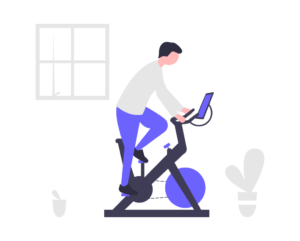The Science of Zone 2 Training: Maximizing Aerobic Efficiency in Cycling
Zone 2 training has gained widespread recognition among endurance athletes, particularly cyclists, for its ability to improve metabolic efficiency, increase mitochondrial density, and enhance long-term aerobic endurance. This article dives deep into the science behind Zone 2 cycling, its physiological adaptations, and how to optimize training using power zones.
What Is Zone 2 Training?
Zone 2 refers to a moderate-intensity training level, typically 60-70% of max heart rate (HRmax) or 56-75% of Functional Threshold Power (FTP). It is a crucial zone for endurance development, allowing cyclists to build a strong aerobic foundation while maintaining a low level of physiological stress.
Physiological Benefits of Zone 2 Training
Zone 2 training stimulates several key adaptations that enhance cycling performance:
- Increased Mitochondrial Density: Research shows that sustained training in Zone 2 enhances mitochondrial biogenesis (Holloszy, 1967), improving the muscle’s ability to use oxygen efficiently for ATP production.
- Enhanced Fat Oxidation: Zone 2 training preferentially uses fat as the primary fuel source, sparing glycogen stores and extending endurance capabilities (Achten & Jeukendrup, 2003).
- Capillary Growth: Long-term Zone 2 training increases capillary density, improving oxygen and nutrient delivery to muscles (Andersen & Henriksson, 1977).
- Improved Lactate Clearance: Training at this intensity enhances lactate transport and utilization, delaying fatigue and increasing time-to-exhaustion in higher zones (Brooks, 1985).
- Lower Stress on the Nervous System: Unlike high-intensity workouts, Zone 2 training promotes recovery while still yielding aerobic gains, making it an ideal daily training component (Seiler, 2010).
How to Structure a Zone 2 Training Program
For effective Zone 2 development, cyclists should aim for 60-80% of total weekly training time at this intensity. Here’s an example plan:
- Beginner: 3-4 hours per week of Zone 2 riding, in sessions of 45-90 minutes.
- Intermediate: 6-8 hours per week, with longer endurance rides of 2-3 hours.
- Advanced: 10+ hours per week, incorporating multiple 3-5 hour endurance rides.
How to Measure and Track Zone 2 Training
Using heart rate and power meters, cyclists can precisely target Zone 2.
- Heart Rate: Maintain 60-70% of max heart rate. Keep in mind, factors like fatigue and temperature can cause heart rate drift. Use our HR calculator.
- Power Zones: Aim for 56-75% of your FTP. To calculate your personalized power zones, use our Power Zones Calculator.
Common Myths About Zone 2 Training
- “Zone 2 is too easy to be effective” – Many cyclists underestimate the adaptations that occur at lower intensities. The world’s top endurance athletes spend most of their training time in Zone 2 (Seiler, 2010).
- “More intensity is always better” – Over-reliance on high-intensity training leads to burnout and limits aerobic gains.
- “Zone 2 training doesn’t improve speed” – Speed and power in higher zones depend on aerobic efficiency, which is built through consistent Zone 2 work.
Zone 2 training is one of the most effective methods for developing endurance, increasing fat metabolism, and improving overall cycling efficiency. By consistently incorporating Zone 2 rides, cyclists can build a robust aerobic foundation and unlock their full performance potential.
Relevant studies and sources (e.g., Holloszy, 1967; Achten & Jeukendrup, 2003; Brooks, 1985; Seiler, 2010).








